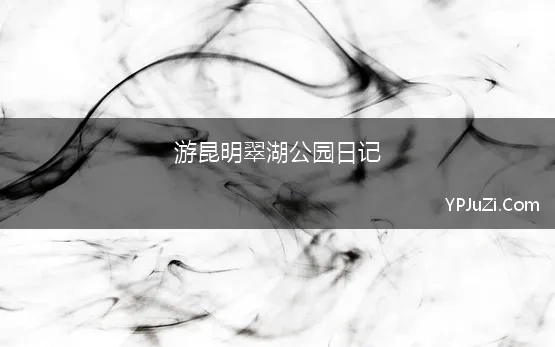解在后面的词语 连词and的用法全解

一、表示并列或对称的关系
1. 用来连接语法作用相同的词、短语或句子,可译为“和”、“并”、 “又”、“兼”等。如:
Lucy and I go to school five days a week. 我和露西每周上五天学。(连接两个并列主语)
You must look after yourself and keep healthy. 你必须照顾自己并保持身体健康。(连接两个并列谓语)
They teach us Chinese and we teach them English. 他们教我们汉语,我们教他们英语。(连接两个简单句)
2. 如果连接两个以上的词语,通常把and放在最后一个词语前面;为了强调,可在两者之间分别加上and;把词语连接起来时, 通常把较短的词语放在前面。如:
I like eggs, meat, rice, bread and milk.
All that afternoon I jumped and sang and did all kinds of things.
The apples are big and delicious.
3. 有些用and连接的词语,次序是固定的,不能随意改变。如:
men, women and children
fish and chips
二、表示条件和结果
在祈使句后,常用and连接一个简单句,表示条件与结果的关系,它们在语法上是并列关系,但在意义上却是主从关系,也可译为“如果……就……”。如:
Work hard and you will live happily. = If you work hard, you will live happily.
Come early and you will see him. = If you come early, you will see him. 如果
三、表示因果关系
and连接两个动词或两个分句,带有因果关系,此时and相当于so,可译为“便”、“ 于是”、“因而”、 “结果”等。如:
She couldn't find her mother and began to cry. 她找不到妈妈,于是哭了起来。
It's a fine day today, and everyone is busy. 今天是个好天气,因而人人都很忙。
四、表示递进与转折
and表示转折时,相当于but,但语气较弱,可译为“而且”、“可是”、“不过” 或不译。如:
I mean you eat too much, and you don't take enough exercise. 我的意思是你吃的太多,而且运动得不够。
They call me Lily sometimes, and I don't always tell them that they've made a mistake. 他们有时叫我莉莉,但我并不总是告诉他们说他们弄错了。
五、时间状语
相当于时间状语when的作用,强调and后者内容
例句He was just going out and the telephone rang.
She was walking down the road and heard someone singing.
其它:
一、表示目的
在口语中,and常用在go, come, try等动词后连接另一个动词,表示目的。此时and相当于to,不必译出。如:
Go and see! 去看看!
Come and meet the family. 来见见这家人。
二、表示承接关系
and用在句首,起承上启下的作用, 可译为“因此”、“那么”、“于是”等,也可不译。如:
And what's this?那么这是什么呢?
And the air today is nice and clean.今天的空气真清新。
三、表示动词的先后关系
and常用来连接两个动词或动词词组,后一个动词所表示的动作发生得迟一点 。此时and相当于then,可译为“然后”。如:
Then he got out of the lift and climbed up to the fifteenth floor on foot. 于是他从电梯里走 出来,然后步行爬上第15层楼。
Go along the street, and take the third turning on the right. 沿这条街走,然后在第三个路口向右拐。
四、表示动作上的伴随关系
and连接两个动词,动作同时发生,前一个动词表示姿势或状态,后一个动词表示伴随动作,and相当于while,可译为“边……边……”。如:
They talked and laughed happily. 他们愉快地边谈边笑。
The baby watched and listened. 这个婴儿边看边听。
五、表示意义上的增补
and连接两个分句,第二个分句是第一个分句的补充或进一步说明,可译为“又 ”、“同时”等。如:
If you want to be thinner and healthier, you have to eat less food - and you also have to take more exercise. 如果你想既苗条又健康,你就得少吃食物——同时,你还得多进行运动。
Don't be late - Oh, and put on your old clothes. 别迟到——噢,还要穿上你的旧衣服。
六、表示强调,加强语气
用and 连接两个相同的动词表示动作的反复;用and连接两个相同的副词,表示动作的延续;用and连接同一个形容词或副词的比较级表示程度的逐步加深。如:
The baby laughed and laughed. 这个婴儿笑呀,笑个不停。
They talked on and on very happily. 他们很高兴地谈了又谈。
She looked at me and cried harder and harder. 她看着我,哭得越来越厉害。
七、and有时连接两个反义词
and连接的两个反义词在句中作状语或后置定语,这两个词的次序不得颠倒。如:
He uses a lift to go up and down. 他乘电梯上楼下楼。
When Christ was born nearly two thousand years ago. many people, rich and poor, gave him presents. 差不多两千年前,耶稣出生时,许多人,无论贫富,都给他礼物。
八、and连接两个数词或连接百位和十位之间的数词,前者可译为“加”,后者则不译。如:
What's one and two? 一加二是多少?
There are three hundred and sixty-five days in a year. 一年有365天。
九、and用于固定词组或结构中。如:
Both John and Ann have got penfriends. 约翰和安都有笔友。
The museum is between the post office and the hospital. 博物馆位于邮局和医院之间。
I love autumn because it's nice and cool. 我喜爱秋天,因为它很凉爽。
版权声明
本文仅代表作者观点,不代表本站立场。
本文系作者授权本站发表,未经许可,不得转载。

